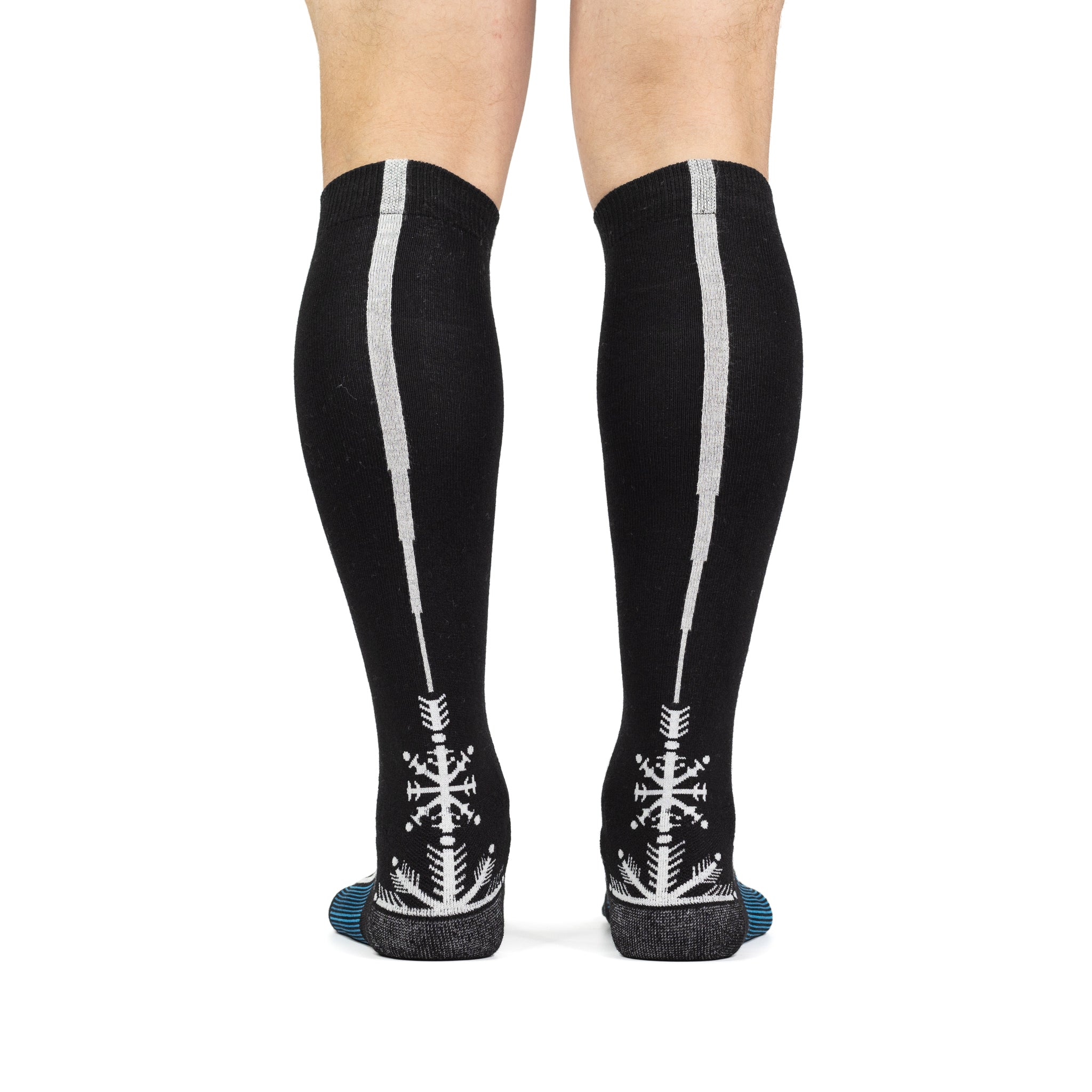But the difference is that the gloves and pants that you wear over the baselayer are breahthable, so vapor has somewhere to go after ‘breathing’ through your baselayer.
The more correct analogy would be to wear a baselayer covered by plastic pants or gloves, that locks all the moisture inside, since that is what your ski boots(shell and liner) are doing.
In a skiboot that moisture has nowhere to go.
Alo, we have to make sure not to confuse breathability with moisture transport(wicking), that could lead to misunderstanding each other.
Breathabilty means the ability to let water
vapor pass through unhindered
Wicking means the ability to pull
liquid water from your skin, out to the outside surface.
Personally, I prefer merino for my ski socks, precisely becasue it doesn’t wick very much. Instead, it has the capacity to store a fair bit of moisture inside the fibers, and it doesn’t smell as quick. I find those two aspects most important in sock selection.
Like
@Tom K. I start with very thin socks, and move up to lightweight if my liners are bit packed out. I replace my liners before I get to the midweight or heavyweight socks, haha!
Like
@Atomicman I keep my skisocks warm and dry until I get to the hill.
I also use Intution liners, not only for comfort and performance, but also for warmth.
I don’t know that they are warmer than open celll foam (stock) liners when dry, but over time, the open cell liners will absorb moisture, and become less warm. Intuition is closed cell foam, so it always insulates the same, whether dry or wet. (I use them in my mukluks too).


